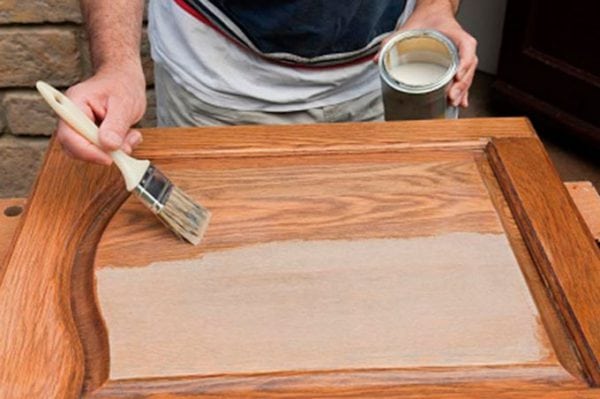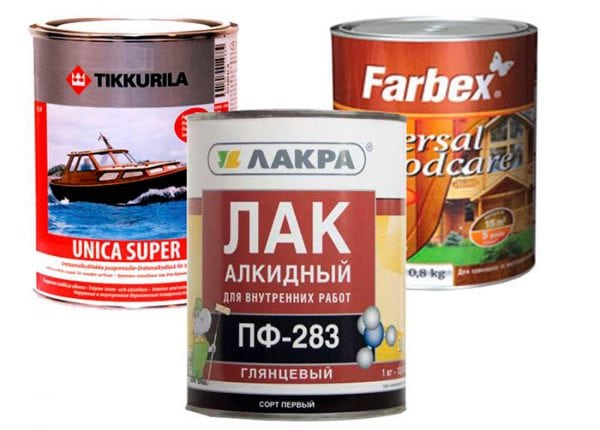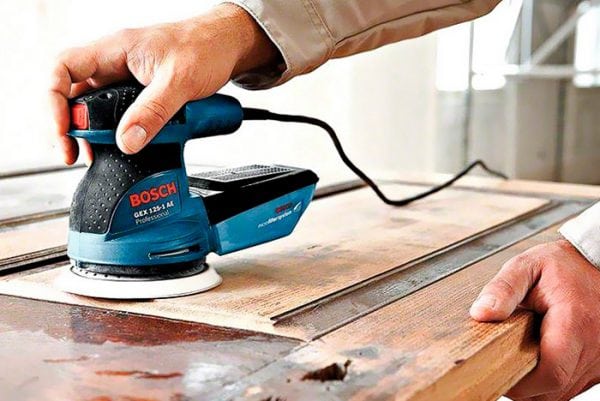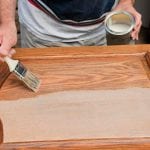Despite the proliferation of new materials for the manufacture of doors, wooden structures are the most popular, especially in private housing. The lacquered surface looks much more painted, emphasizes the beauty of wood and gives the door a presentable appearance. How to cover the door with varnish will be discussed in this article.

Varnish selection
There are several types of coatings that are used when varnishing doors.
- Alkyd. They include solvents that give the wood a yellowish tone and are resistant to moisture. To improve the ability to dry, increase moisture resistance and strength, the so-called hardeners are often added to the composition. The drying time of the surface coated with such coatings is approximately 24 hours.
- Acrylic They are made on a water basis. They are odorless and non-toxic. To increase strength, hardeners can be added to the varnish composition, since without it, the composition does not differ in good strength characteristics.
- Nitro-lacquers. The main advantage is very quick drying. The basis of this varnish is solvents. The disadvantage is increased toxicity, which often makes its use unjustified. The best way to apply is a spray gun.
- Polyurethane coatings are durable. Polyurethane gives a dark shade, and therefore the surface of the door must be primed.
There are other varieties that can be used when varnishing a door. However, the above are considered the most common.
Note! There is a pattern: the more toxic the varnish, the higher its consumer properties.

Materials and Tools
For preparatory work and further varnishing you will need:
- brush or roller;
- cotton rags;
- putty knife;
- wood putty;
- Grinder;
- sandpaper (with both fine-grained and coarse-grained);
- building hair dryer.
Door preparation
Before varnishing the door, it must be sanded, removing all bumps and roughness. One of the options for grinding is a board (25 × 10 centimeters) wrapped in sandpaper.
Grinding is an important operation, so you need to be careful about it. Moreover, this stage is quite laborious. You can use a grinder - this will speed up the process. All kinds of cracks, cracks and other defects are sealed with putty. Pay attention to the color of the putty, as this will affect the final appearance of the finished door.

Further, the door is treated with a special impregnation that protects the material from moldy and bark beetle. To improve the quality of varnishing and reduce the consumption of varnish, the surface is primed. The primer is applied with a brush or roller.
Dust must be removed from the work surface and degreased with White Spirit.If you plan to paint the doors, they can be treated with a chemical composition. However, this does not need to be done before varnishing, since the wash will impregnate the wood and adversely affect its color.
Important! Primer, impregnation and varnish should have the same base. If this is not the case, incompatibility of the components will lead to delamination of the coating. In connection with the foregoing, all components are recommended to be purchased from one manufacturer.
After the primer, we carry out another grinding, using either sandpaper No. 180, or a grinder. The ground surface is re-primed.
to contents ↑Door varnishing
Opening the jar, you need to slowly stir the composition. This is a prerequisite, since only slow stirring avoids the occurrence of air bubbles. Next, a little varnish should be poured into the prepared container. The door is removed with the frame and laid horizontally.
To ensure a smooth transition between layers, coatings should be applied promptly. Varnish layers are applied in the overlap, and their number should be at least three. Each layer should finally dry (after about 12 hours), and only then can you begin applying the next.
Note! Different varnishes differ in drying times. More precise information on this subject can be found in the instructions.
On panels, varnish is applied with a small brush. The resulting influx and sag are eliminated by sandpaper (except for the last layer). Until the paint is dry, the brush or roller may be in the can with varnish or in a sealed bag.
Note! During operation, some craftsmen leave the door handles in place, wrapping them to protect them from varnish. It is not right. The accessories must be removed to cover the hidden places with impregnation and a primer.
If you need to varnish a door with a previously applied coating, you will have to remove the old layer of varnish or paint. It is important to remove all old paint or varnish. The appearance of the door after its varnishing will depend on this. However, for optimal preservation of the varnish coating, sometimes varnishing according to the old varnish is allowed.
The process of varnishing the door does not apply to complex operations. However, at the same time, it is necessary to observe not only accuracy, but also not to forget about safety: use protective gloves and ventilate the room well.





